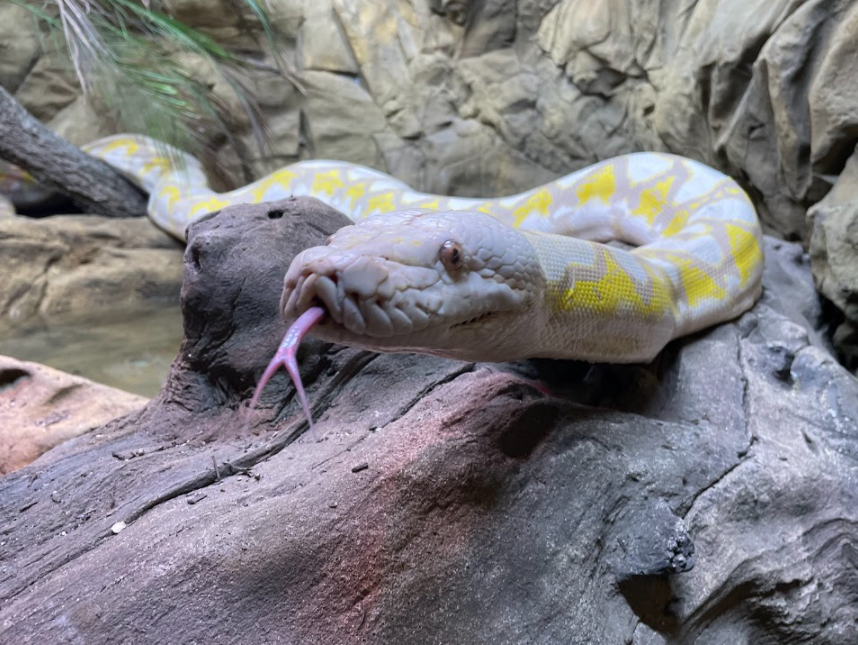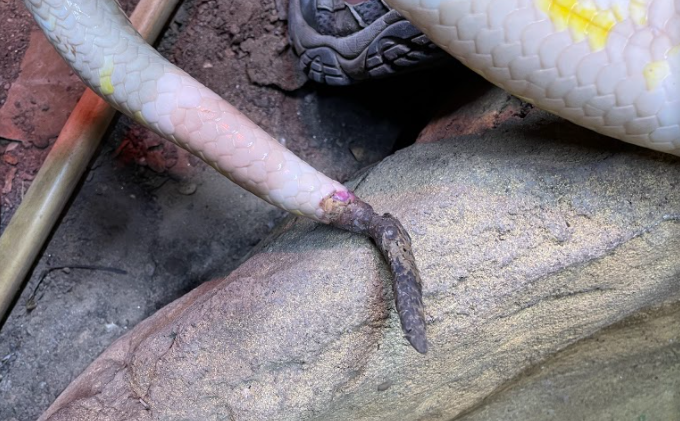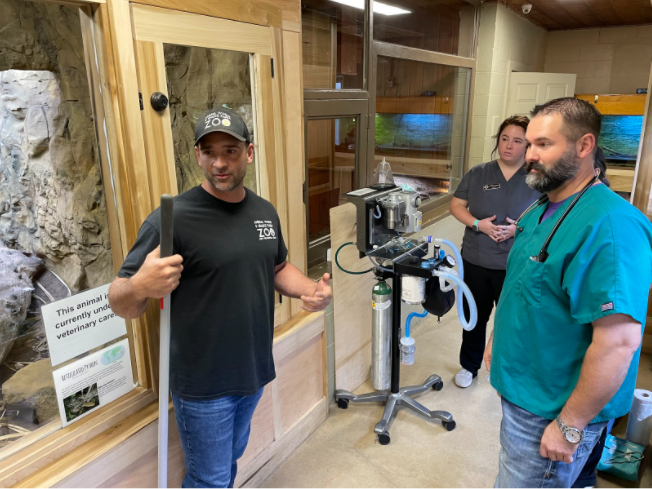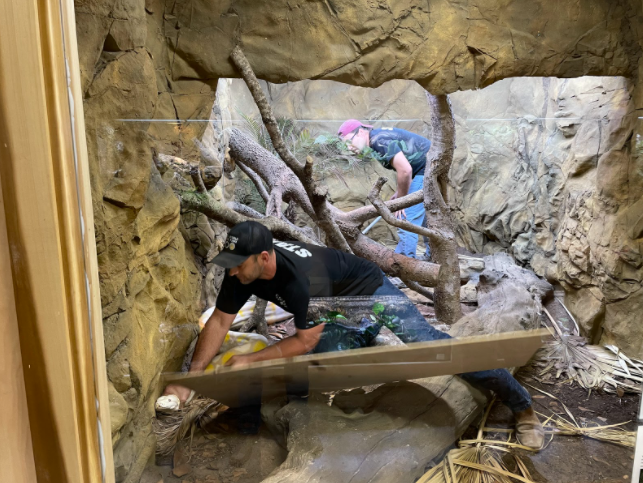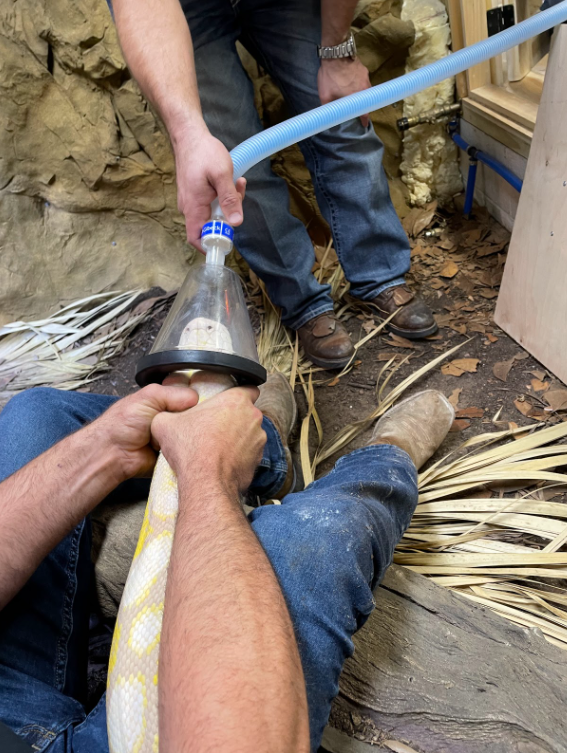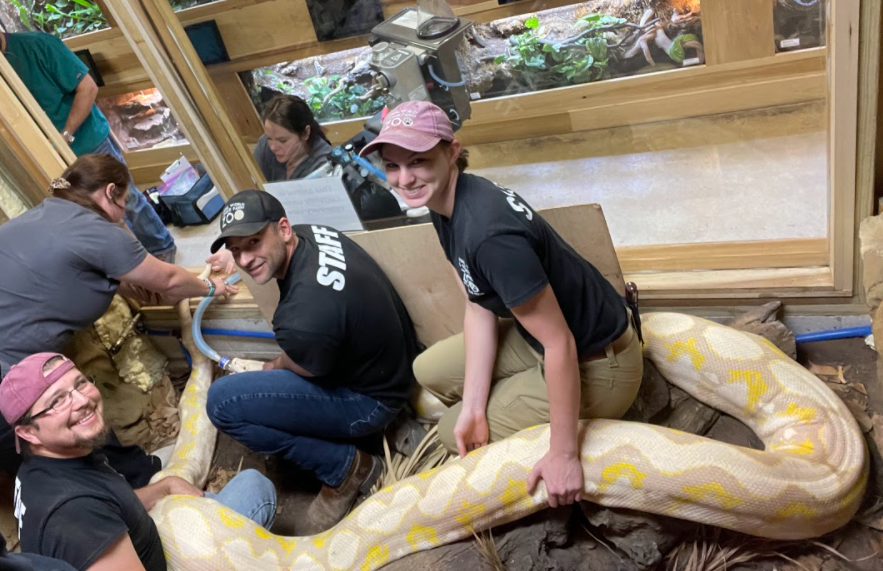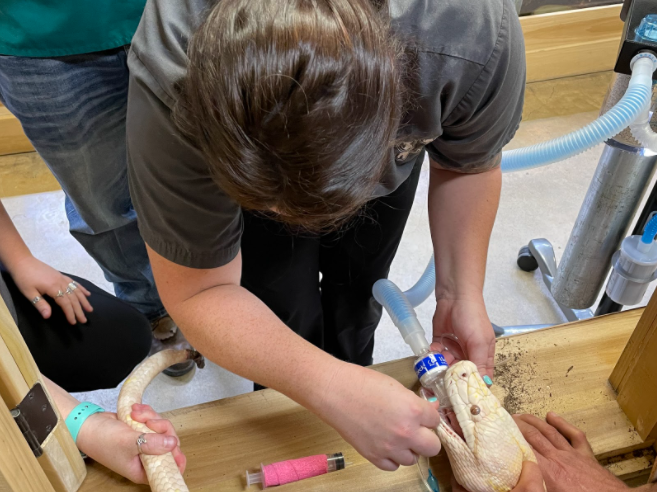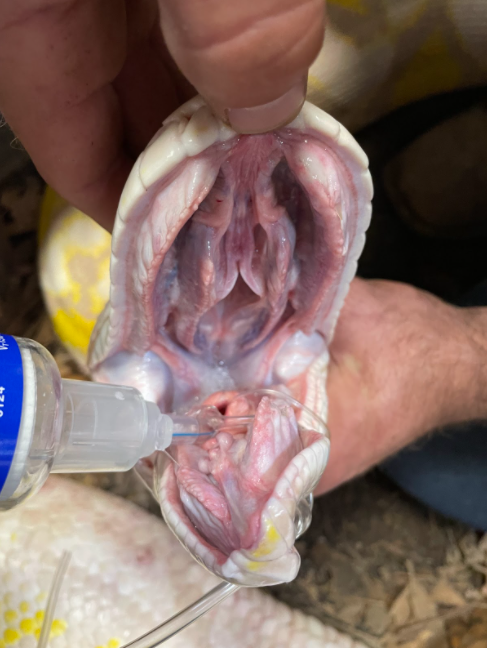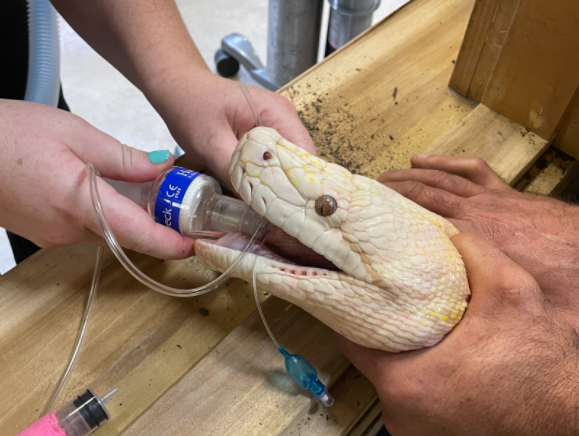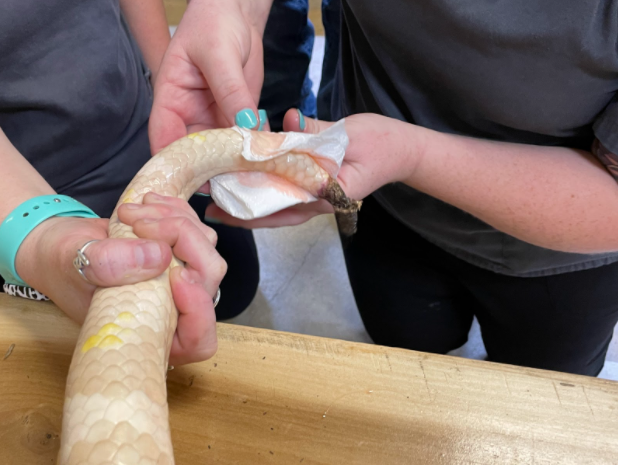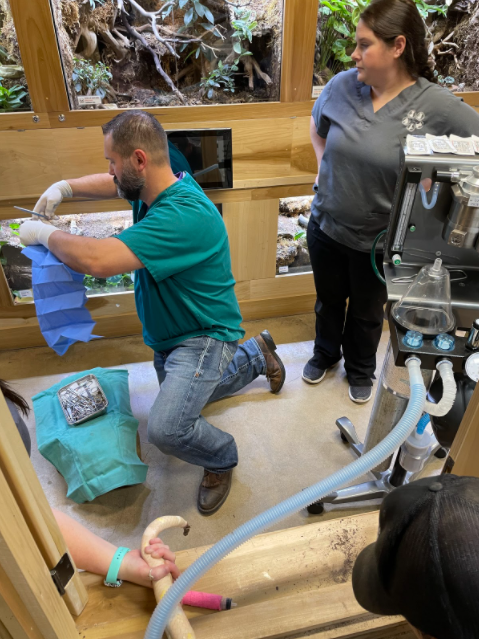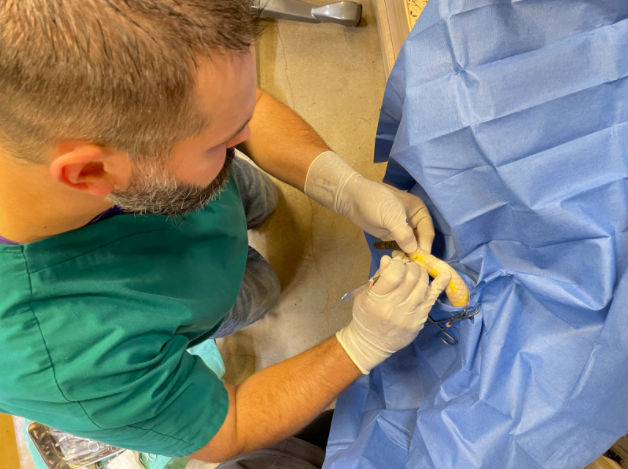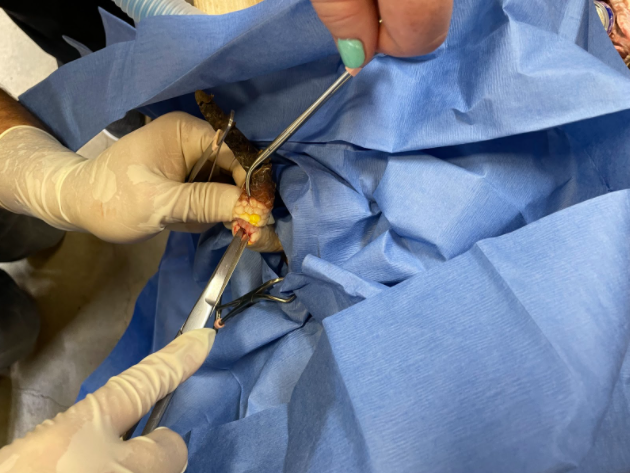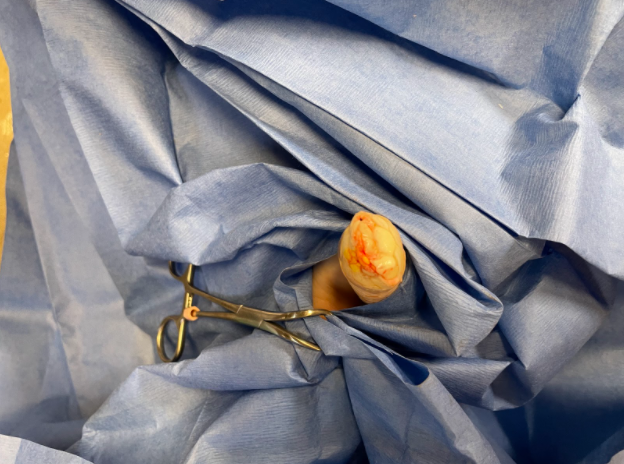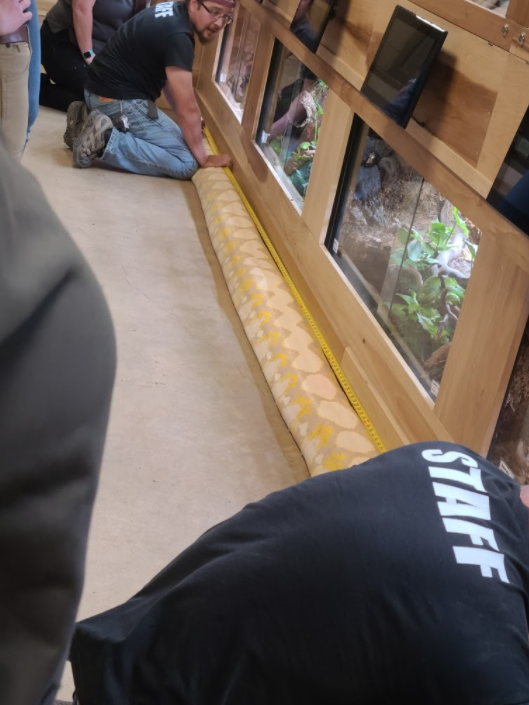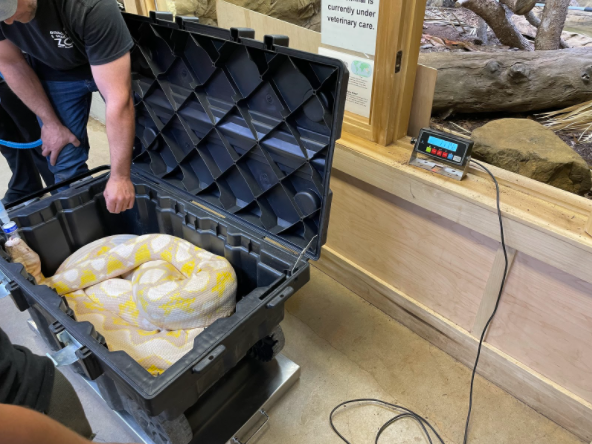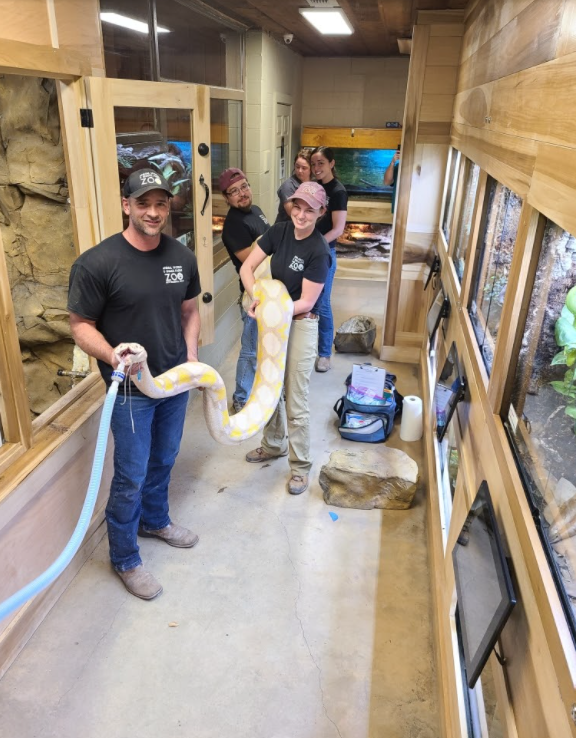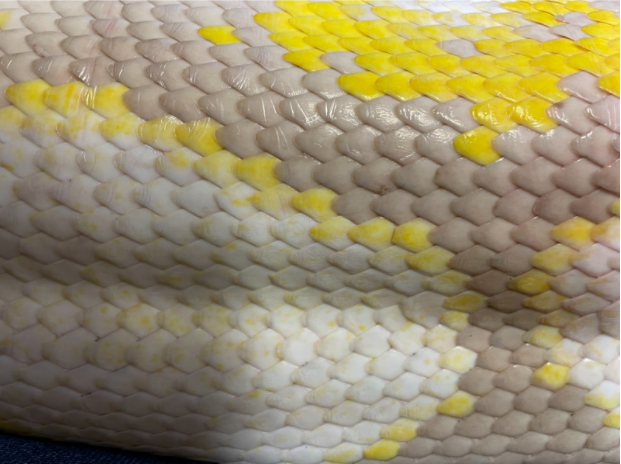In March of 2021, we welcomed Athena, a Reticulated Python, to the Animal World and Snake Farm Zoo’s collection. Upon bringing her into a great, new habitat, our Animal Care Specialists noticed that she had a slight injury to her tail upon arrival.
Over the last few months, our staff monitored the tail’s condition and treated it according to our lead veterinarian, Dr. Rierson of Creek View Veterinary Clinic, using a variety of non-invasive treatments like topical ointment, soaks, and IM antibiotic injections.
Despite our efforts to help the tail heal; the end started to become necrotic and we consulted Dr. Rierson again for next steps. He suggested doing a partial amputation of the necrotic segment of the tail to prevent further damage and possible infection. To make the surgery as stress-free as possible for Athena, the decision was made to do her procedure onsite.
Dr. Rierson and his veterinary technicians arrived around 8am on December 17th, 2021 to begin the procedure. They were greeted by the Animal World and Snake Farm Zoo team consisting of our Mammal Curator, Casey Martin, our Reptile Manger, Clinton Szymanski, our Deputy Director, Jarrod Forthman, and Director of Operations, Emily Jaffe. Everyone then gathered in front of Athena’s enclosure to review the surgical plan one last time. Once the team had reviewed the plan, they got to work.
Surgical Plan:
- Secure the snake’s head
- Zoo team to secure the snake’s nearly 20 foot body
- Administer IM ketamine to calm her nerves
- Place a mask over her face to allow free-flow of isoflurane gas
- Insert an endotracheal tube to keep her anesthetized
- Perform the amputation
Forthman and Szymanski first entered Athena’s enclosure to safely secure her so that the veterinary team could administer the sedation medication.
The team was able to secure Athena and hold her still enough for Dr. Rierson to place a mask over her face. Even with four people attempting to secure Athena, she was still quite wiggly until the ketamine kicked in.
When Athena was feeling the effects of the ketamine and free-flowing gas, a veterinary technician then placed the endotracheal tube inside Athena’s mouth.
At this time, the team was able to safely see inside her mouth and was in awe of the size and shape of her teeth! Reticulated Pythons have multiple rows of sharp-recurved teeth to maintain a grip in their prey while they use their body to powerfully coil and constrict their prey.
After finding the right size tube to fit her, it was secured in place around her bottom jaw. The veterinary team then helped prepare the tip of Athena’s tail for surgery. They cleaned the amputation site and prepared the tools needed for the operation.
Dr Rierson then performed the amputation – carefully cutting through and separating each scale, making sure that the major veins/arteries in that region of her tail were tended to properly to prevent damaging blood flow to the area. He used a special suture to allow her to heal without having to worry about her messing with the wound. He also prescribed her some additional post-op antibiotics to help prevent infection while the surgical site healed.
While Athena was anesthetized, the team wanted to use this opportunity to do a full-body exam of her. They were able to get an updated length and weight, and perform other basic veterinary assessments.
The Zoo team carefully took her out of the enclosure to stretch her out and get an accurate measurement – she was 19.6 feet long. Even with 3 inches of her tail being amputated, she is still the longest snake on display in Texas!
They then carefully placed her onto a scale to weigh her. She weighed 171 lbs!
After those measurements were documented, the team then placed her back in her enclosure and removed the endotracheal tube.
She was monitored closely by our staff for the next 12 hours while her anesthesia wore off and to make sure she was doing okay. She has since been making a speedy recovery and her sutured area is healing well. Be sure to stop by and see Athena the next time you’re at the Zoo!
Did you know?
The color pattern of a reticulated python consists of a complex, diamond-shaped pattern that can be described as a “network” of diamonds. This network-like pattern is the source of their name, as “reticulate” means network.

